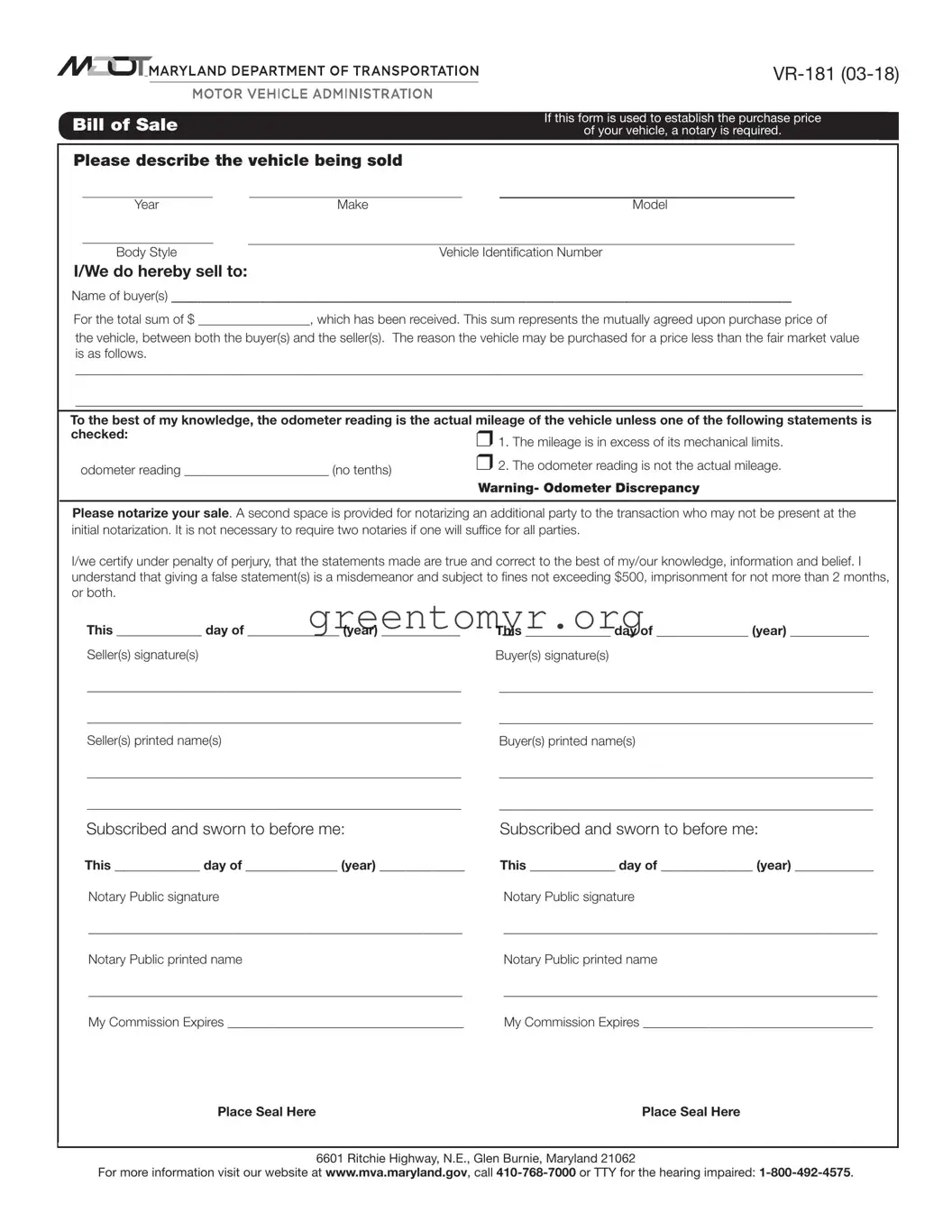Filling out the BOS Vr-181 form is an important step that requires careful attention. Many individuals make simple mistakes that can lead to delays or denials in their applications. Understanding these common pitfalls can help ensure your form is completed accurately and efficiently.
One frequent error involves failing to read the instructions thoroughly. The form is accompanied by guidelines that outline how to fill it out and what information is required. Ignoring these instructions can result in incomplete submissions or misunderstandings about the requirements.
Another mistake often seen is incomplete information. Applicants may neglect to fill out all relevant sections. Providing all requested details is essential, as missing information can lead to processing delays. It’s vital to review the form before submission to ensure every section is filled out completely.
Many people also overlook the necessity of using black or blue ink when filling out the form. Submissions in other colors can be hard to read and may cause confusion. To avoid any issues, stick to the indicated ink colors to ensure clarity and legibility.
In addition, individuals might forget to sign the form before submission. An unsigned application will likely be rejected. Ensure that you sign the document in the required area. A signature confirms your agreement with the information you provided and the process itself.
Another common error is providing incorrect personal information. For example, misspelling a name or entering an incorrect address can lead to significant issues. Double-check all personal details to ensure they match official documents and records.
Omitting important attachments is yet another mistake that many applicants make. Certain forms require accompanying documentation, such as identification or proof of residency. Before submitting the form, review the requirements to make sure you have included all necessary documents.
Some may also submit the form without a proper method of delivery. Sending the application without tracking or using unreliable methods can result in lost submissions. When submitting important documents, consider using tracked mail or secure online methods for peace of mind.
Time management is crucial, too. Waiting until the last minute to complete the form can lead to rushed mistakes. Giving yourself ample time to fill out the form allows for careful review and correction of any mistakes before the submission deadline.
Finally, not seeking assistance when needed can be a misstep. If there are uncertainties about completing the form, reaching out for guidance can help. Utilize resources such as customer service or legal aid if necessary. Proper support can clarify complex sections and prevent mistakes.

